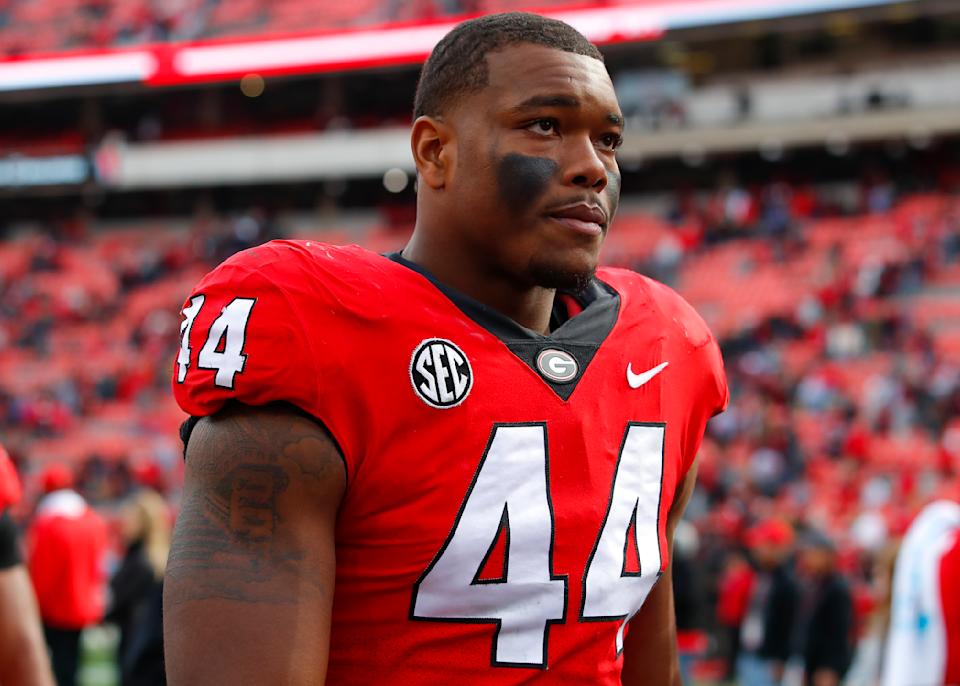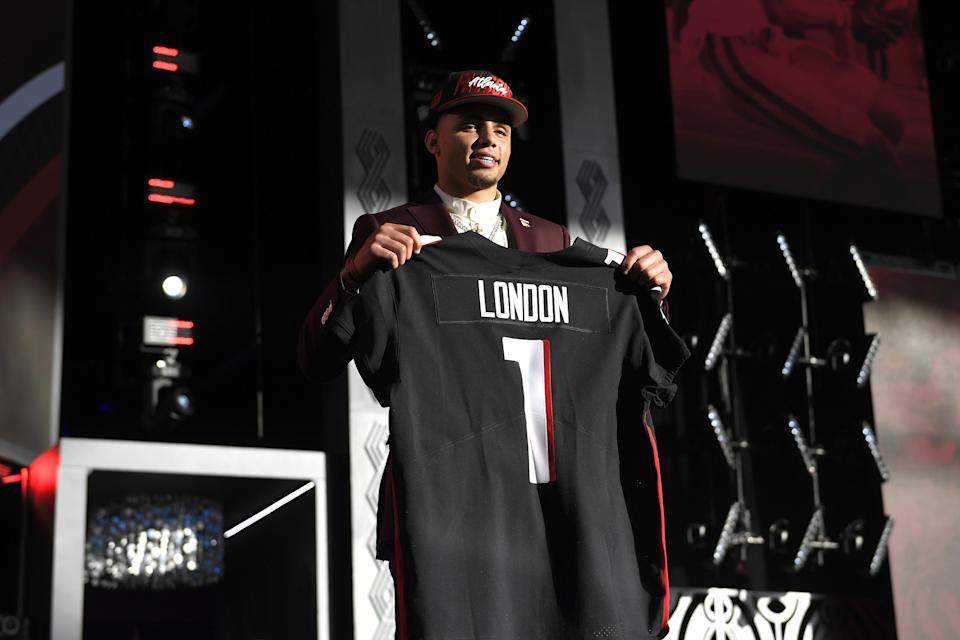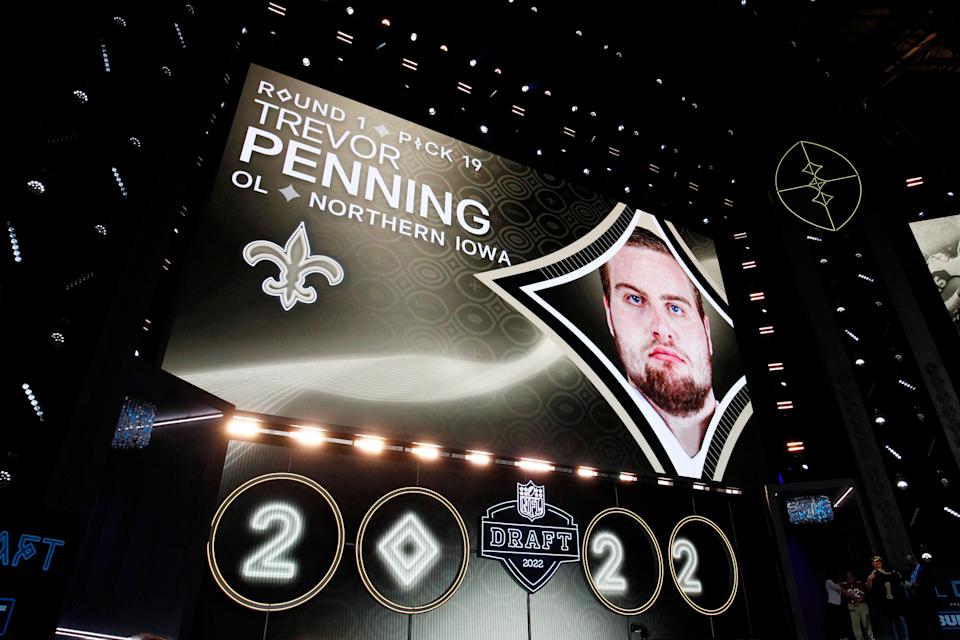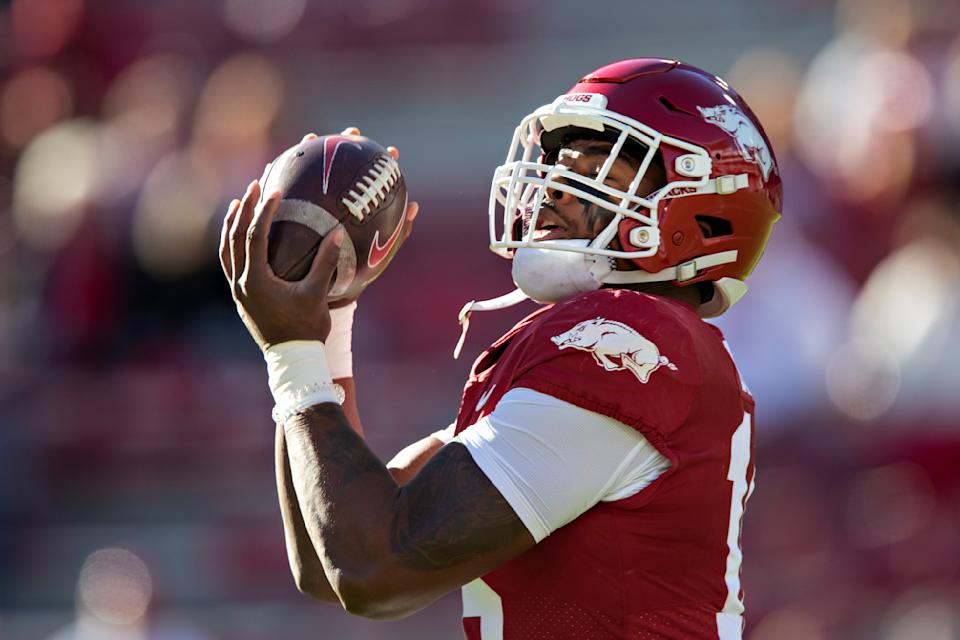Fit is critical when it comes to the NFL draft.
Sure, there are myriad factors that determine whether players will find NFL success. But the matching of talent, scheme, surrounding cast and expectations can be a massive determinant on whether players work out or don’t.
Landing spots are simply crucial to the equation. Some prospects just seem to end up in tough spots. Maybe the team drafting them thinks they know how best to employ them but ultimately don’t. Perhaps the head coach and/or general manager is/are on the hot seat, and the next regime won’t be as high on their ability.
It’s not always an indictment of the players themselves. Although that’s also a possible factor in how they develop — or don’t.
So let’s examine a few higher picks from the 2022 NFL draft to see which ones might be entering trickier situations to navigate, and whether they’ll be hurt by the situations in which they landed.
It starts right at the top with Walker, who was the unconventional pick at No. 1 over Aidan Hutchinson and the field. This was not a draft class with a clear-cut option at one, but Walker’s combination of thrilling athletic traits and minimal production will make this — whether he fails or succeeds — a fascinating draft litmus test for years to come.
Walker’s performance also will be scrutinized against what Hutchinson does with the Lions, fairly or not. Even if they’re different players with varying skill sets, and they might not even play similar roles on their prospective units.
Which brings us to how the Jaguars plan to use Walker. It’s interesting because they clearly valued his length and versatility, and the plan appears to be using him as a stand-up rusher opposite Josh Allen and perhaps kick Walker to the interior in pass-rush situations.
“He played all the way up and down the line of scrimmage, anywhere from a 0-technique all the way to a 7-technique,” Jaguars GM Trent Baalke said recently. “(He also) played in the two-point (stance) off the edge, which he’s going to be used a lot in our scheme.”


Walker was known to stand up in Georgia’s system. But he was almost always a rusher in those situations. On occasion when he dropped into coverage, maybe two or three plays per game, the results were inconclusive. The Kentucky game in particular was one where Walker looked less than fully comfortable when asked to cover instead of rush.
For a young player such as Walker, it will be important for him to use his rookie season to grow as much as possible as a playmaker and make tangible strides. But there will be a lot of pressure on him early on — even some unfair pressure.
This should be viewed as a two- or three-year development period, but we all know that won’t be how Walker is judged this season if he’s not filling up box scores the way he seldom was able to in college. Occupying blocks for others to make plays is noble, valuable work, but it’s not typically how No. 1 overall picks are judged.
Just as Walker will be judged against every other highly rated defender, London will be compared to the top receivers in the 2022 draft — and the next three off the board just so happened to be picked almost immediately after he was at No. 8 overall.
London was a bit of a surprise to some as the top wideout selected. That always tends to skew public perception a bit, and that tends to slant toward more pressure on the player to “prove” his worth in that spot, even if that’s a pretty tough way to view it. After all, the team made that pick, not the player.
And realistically, he should be a pretty good fit, scheme-wise, in Atlanta’s offense. There’s a WR1 void he steps into immediately, and having Kyle Pitts on the field should help ease the coverage attention that London will receive.
Head coach Arthur Smith appears to want to use London similarly to how he was used in college, both inside and out, not too vastly different from what Smith asked of A.J. Brown as a rookie when they were together with the Tennessee Titans. Brown surpassed the 1,000-yard receiving mark, scored nine total TDs and finished third in the Offensive Rookie of the Year balloting.


At split end, London could be used as a 50-50 ball winner and on slants and deep outs; in the slot, he might be featured more on hitches, crossing routes and screens. He’ll also be asked to block in the run game. All are areas where the gifted London can win.
But just how prolific will Marcus Mariota and the passing game be? That’s hard to say. And if you go back to 2019 (the last time we really saw the QB in any extensive action) and look at how Mariota worked with Brown, the relationship took time to brew.
Mariota started the first six games of the season, and Brown averaged 2.3 receptions per game (on 3.8 targets) for 45.5 yards and 0.3 TDs. Over the Titans’ final 10 games that year, all with Ryan Tannehill at QB, Brown’s per-game averages went up noticeably: 3.8 receptions (on 6.1 targets), 77.8 yards and 0.6 TD catches.
With Mariota starting early on, he targeted Corey Davis and Adam Humphries (27 targets apiece) more than he did Brown (23), with journeyman Dion Lewis and 35-year-old Delanie Walker not far behind on the pecking order (21).
We also must remember that London won’t turn 21 years old until July. Not every rookie is Ja’Marr Chase or Justin Jefferson, after all. After all, look no further than another 21-year-old (Jerry Jeudy) as an example of a highly productive college producer who endured a somewhat frustrating rookie season, for different reasons.
London has the chops to be good right away. But it also wouldn’t be shocking if his QB situation and some unrealistic expectations could mar his Year 1 experience.
OT Trevor Penning, New Orleans Saints
The Saints’ behavior this offseason largely has pointed toward a belief that management views this team as a contender. You could argue that allowing Terron Armstead to walk belies that notion a bit, but they aggressively positioned themselves to fill their biggest immediate holes — including and especially left tackle.
Sure, they moved up first for WR Chris Olave, another player facing some pressure to contribute in a fairly big way immediately. But the pressure on Penning to step right on the all-important blind-side spot could have a pretty big say on how New Orleans’ season will pan out.
Plus, both of their first-round picks came collectively at a very steep price.


The jump in competition is another factor for Penning that can’t be glossed over. Sure, he held his own at the Senior Bowl against higher-level prospects after spending college at the FCS level. But there’s a jump beyond that when facing rushers such as Brian Burns and Shaq Barrett multiple times per season.
Penning’s gnarly style should make him a popular player with Saints fans at some point. Heck, he could develop into the next Kyle Turley in time for all we know. But he’s also a penalty-prone player until further notice, and the first time he’s guilty of a 15-yard personal foul (and God forbid it wipes out a touchdown or big gain), Penning will come into the crosshairs.
It’s been said that with the best offensive linemen, the less you hear about them, the better. We don’t wholly believe that’s true, but when it comes to pass-block whiffs and yellow hankies, it certainly is.
Penning doesn’t profile as a player whom we’ll not notice; whether that’s a good or a bad thing remains to be seen. We can envision him being an instant hit or a player who suffers some fairly big hiccups as a rookie. The middle ground doesn’t feel all that likely.
OL Tyler Smith, Dallas Cowboys
From the first time we laid eyes on Smith’s ups and downs in two big games last season against Oklahoma State and Ohio State.
The two biggest takeaways after those initial viewings: 1. Wow, this kid is talented. 2. But, boy, he’s raw.
Once the 2021 college season was over and we were able to view Smith in later games (albeit against lesser competition), we did feel as if Smith had improved markedly. For one, cut way down on his penalties — from 15 flags in the first eight games to only one in the final four games. And after struggling as a pass blocker (especially against Oklahoma State), we thought Smith was far, far more confident and dominant in that regard later in the year.
Still, there is a whole lot of projection involved with Smith, especially in Year 1. In addition to dealing with quicker rushers and stronger run defenders, he likely will be asked to kick inside to guard — a position where he played exactly two game snaps at Tulsa.


Guard might end up being Smith’s best home in the long run. He was taxed by edge speed more than once, struggled with balance on the outside and might be better able to harness his raw power in more of a phone-booth role. Having Tyron Smith on his outside hip can’t hurt, either.
But learning a new position is tricky business for some offensive linemen, especially those as young (21 years old) and raw as Smith is. Plus, grabbers tend to be grabbers whether they’re playing inside or out; some of that feels like habitual muscle memory when you watch Smith panic and divert to that tactic. Ditching that habit will be key to his development.
On top of everything, playing in the cauldron of Dallas isn’t for the faint of heart. If Smith struggles out of the gate (or worse yet, can’t win the wide-open left guard job initially), the wolves will come out in packs.
WR Treylon Burks, Tennessee Titans
The surprising trade of A.J. Brown left the Titans in a tricky spot for this season. It could end up hurting Burks as much as anyone in Tennessee.
Robert Woods’ addition from the Rams certainly helps deaden the blow a bit, but he’s coming off a torn ACL and is expected to miss part of the offseason. Plus, the situation with Ryan Tannehill is getting a bit awkward. It’s clear there’s some tension between team and quarterback, and that’s never a great thing.
But the worst thing that could have happened to Burks was being compared (by some) to A.J. Brown during the pre-draft process, mostly for size comparisons, and then landing in the void the team created by trading Brown.
Comparing Burks to Brown isn’t fair or accurate, from our vantage point. Brown entered the NFL having played more outside in college (34.9% of his snaps) than Burks was (14.2%) and being used more on vertical routes. They’re just different players, as we see it, even if their dimensions are somewhat similar. Brown was also a measurably more dynamic athlete coming out.


Expecting a one-for-one replacement for Brown is just thoughtless wishcasting, and we hope the Titans show some patience with his early expectations. There was a reason Burks was slotted inside — it’s where the Arkansas coaches felt he was best. Maybe this is how the Titans must use him, as well as on his patented trick plays. We’d absolutely sign up for a backfield formation with Burks, Derrick Henry and Malik Willis and see how defenses respond.
But simply handing the underdeveloped Burks a starting role outside and asking him to master it in Year 1 might be the worst imaginable version of throwing the kid in the deep end of the pool as a way of teaching them to swim. That’s one way you can ruin a talented player.
Will Titans coaches and fans exercise some patience for Burks’ Year 1 returns after the team earned a No. 1 conference seed and crashed and burned in the playoffs? If not, Burks could be made into a scapegoat if the results don’t come close to matching what Brown did early on.
